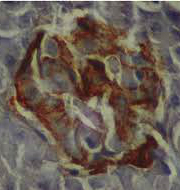Endosulfan causes DNA damage in animals: Study
Researchers in India for the first time have found that mice and rats exposed to endosulphan suffer from DNA damage and genomic instability, and impaired DNA damage response.
This breakthrough discovery was discovered team of researchers led by Prof. Sathees Raghavan from the Bengaluru based IISc (Department of Biochemistry).
Key Highlights of Research
- When animals get exposed endosulphan, it generates reactive oxygen species in their body which is a potent DNA damaging agent.
- These reactive oxygen species in turn cause DNA damage in the form of breaks in DNA strands. These broken DNA strands generally tend to repair themselves by rejoining.
- But Endosulfan further causes extensive processing of broken DNA leading to increased and long deletion in the strands.
- Endosulfan also increases the damage by altering DNA repair levels by promoting erroneous repair of the broken DNA strands.
- Erroneous repair by rejoining would lead to undesirable genome level changes that may further lead to genomic instability causing cancer and other genetic abnormalities.
- Non-homologous end joining (NHEJ) of the broken ends of broken DNA strands is one of the major mechanism.
- However, in animals exposed to Endosulfan, micro homology mediated end joining (MMEJ) is seen which is enhanced activity of an error-prone and harmful repair mechanism.
What is Endosulfan?
- Endosulfan is an organ chlorine pesticide that induces breaks in DNA strands and disturbs the damage response mechanism found in cells thus leading to compromised DNA strand repair.
- If people who have occupational exposure (mostly related to agriculture) of 2-70 microgram/litre of Endosulfan in blood then genetic abnormality and increased cancer occurrences have been witnessed in them.
- In case of environment, open spraying of Endosulfan causes a disaster on the biodiversity of the area. It leads to decline in plant diversity particularly for native species. Fishes are worst hit.
Month: Current Affairs - August, 2016


